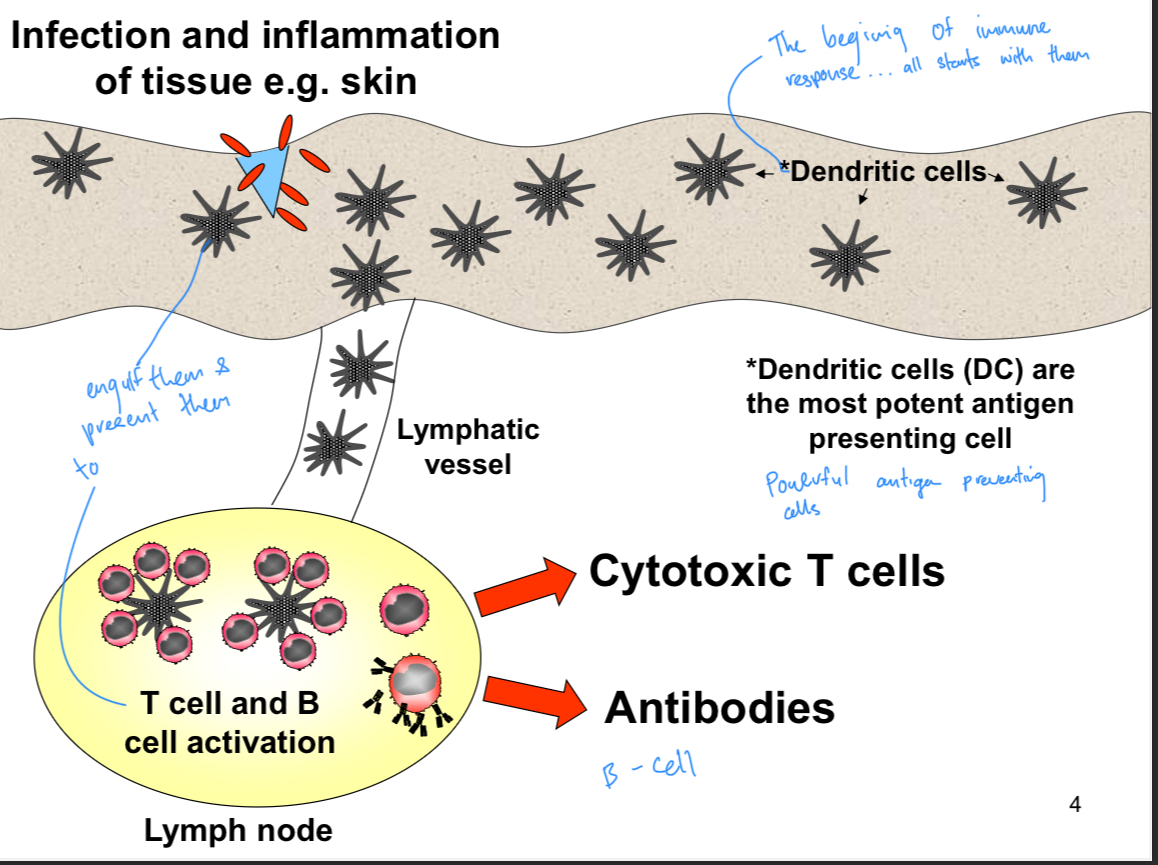L34 Addaptive immunity
Adaptive Immunity
Evolved in vertebrates.
Leukocytes
White blood cells, doesn’t make up a lot of the blood but main cells involved in immunity.
1/11
Earn XP
Description and Tags
Flashcards about adaptive immunity and antigen presentation
Name | Mastery | Learn | Test | Matching | Spaced |
|---|
No study sessions yet.
12 Terms
Adaptive Immunity
Evolved in vertebrates.
Leukocytes
White blood cells, doesn’t make up a lot of the blood but main cells involved in immunity.
Dendritic Cells (DC)
Beggining of adaptive immune response, most potent antigen-presenting cell, activates T cells and B cells.
Antigen Sampling and Presentation
DC are present in major organs, they phagocytose (eat) antigen, process it into peptides, and present it on MHC to T cells. They migrate from organs to draining lymph node via lymphatic vessel.

CD4+ T cells (helper cell)
Help B cells make antibodies and help CD8 T cells.
CD8+ T cells
Become cytotoxic and kill virus-infected cells and cancer cells.
Purpose of antigen uptake
Clearance of pathogens, and presantation to T cells (for adaptive response).
Vertebrates
Possess both innate and adaptive immune systems.
Invertebrates
Have innate immunity only. (agnathans are exception)
MHC molecules
T cells respond to peptides loaded onto MHC molecules for immune surveillance.
Endogenous antigens (inside cell eg viral antigens)
Produced in cytoplasm, proteins degraded into peptides by proteasome (blender). Peptides rapidly imported into ER where peptide loading of MHC-1 takes place. Then the complex is transported to cell surface for immune surveilance.
Exogenous antigens (outside cell eg EC bacteria or viruses)
Phagocytosis of antigen, antigenic proteins are degraded in acidic phagolysosome. Peptide loading of MHC-11 takes place in phagolysosome.